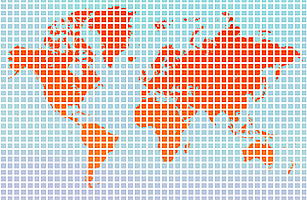
Tis the season to be selfish. Right after the global financial crisis exploded in 2008, many economists fretted that countries looking to hold on to their share of a shrinking pie would become more self-interested and protectionist, plunging the planet into an even sharper downturn, just as happened in the 1930s after the Great Depression. Thanks to panic-fueled crisis management by policymakers, it didn’t happen. But after three years of pain and very little economic gain, it may be happening now. The signs are everywhere. Europeans are in the middle of a potentially calamitous debt crisis, one that threatens not only the survival of the euro zone but the idea of the European Union itself: politicians are starting to talk about rolling back visa-free travel between countries. Meanwhile, OPEC is falling apart as the Saudis and the Iranians bicker over how to control the world’s energy spigots. Then there’s the rise of populist politics not only in the U.S. but throughout the rest of the world. Anti-E.U. political parties are gaining support around Europe, and despite the recent overthrow of several Middle Eastern strongmen, nationalism is on the rise in places like China, Brazil and Russia.
All of which underscores the point that globalization, if we define it as the free movement of goods, people and money, was never all it was cracked up to be. The world is just not as flat as pundits would have us think. More than half of global trade, investment and migration still takes place within regions — much of it between neighboring countries. Canada is the U.S.’s biggest trading partner. In his very smart book World 3.0, Pankaj Ghemawat, a professor at the IESE Business School in Spain, tallied up a few telling numbers. Some 80% of global stock-market investment, for example, is in companies that are headquartered in the investor’s home country. Exports make up only about a quarter of the global economy. Only 2% of students attend a university outside their home country. Less than 20% of Internet traffic crosses national borders, and so on. “It’s considered very with it and modern to believe that the world is becoming more unified, but if anything, it’s becoming more fragmented,” says Ghemawat. Some of this reflects the fact that rich countries, especially the U.S., are still much more provincial than you might think, and the political trend in an economic downturn is to become more so — witness the rise of anti-immigrant rhetoric, China bashing and the like. Even multinational corporations, those global emissaries of American capitalism, could be a lot more diverse. Only 7% of the directors of FORTUNE 500 firms are foreigners.
But greater economic and political fragmentation is also, ironically, a ripple effect of globalization. As wealth and power have shifted to the emerging markets, those nations now have the money and confidence to call their own shots — and their calls tend to be quite different from those we would make. Already this is reflected in company and consumer behavior. Firms like Herms, General Motors, Levi Strauss and Coca-Cola rigorously tailor products specifically for emerging-market consumers. Pizza Hut in China is a luxury restaurant complete with white tablecloths and cutlery. For poor countries, Hewlett-Packard makes a “rural” laptop that can be set out in the dust and rain.The big-picture implications are more profound. As developing countries become wealthier and vie for a better seat on the global stage, they are often at odds not only with rich nations but also with each other. Consider Brazil’s anger over a flood of cheap Chinese imports, India and China’s wariness over each other’s military ambitions and the uneasy regional alliances within Asia among countries vying for the same manufacturing jobs.
That doesn’t mean globalization’s a bust. In fact, more of it — in the form of freer markets, lower trade barriers and unfettered immigration — would help alleviate tensions by growing the economic pie. Good luck with that. As they see inequality rise within individual societies